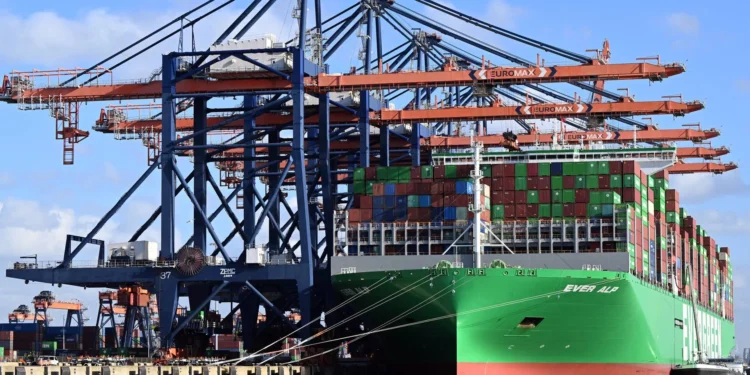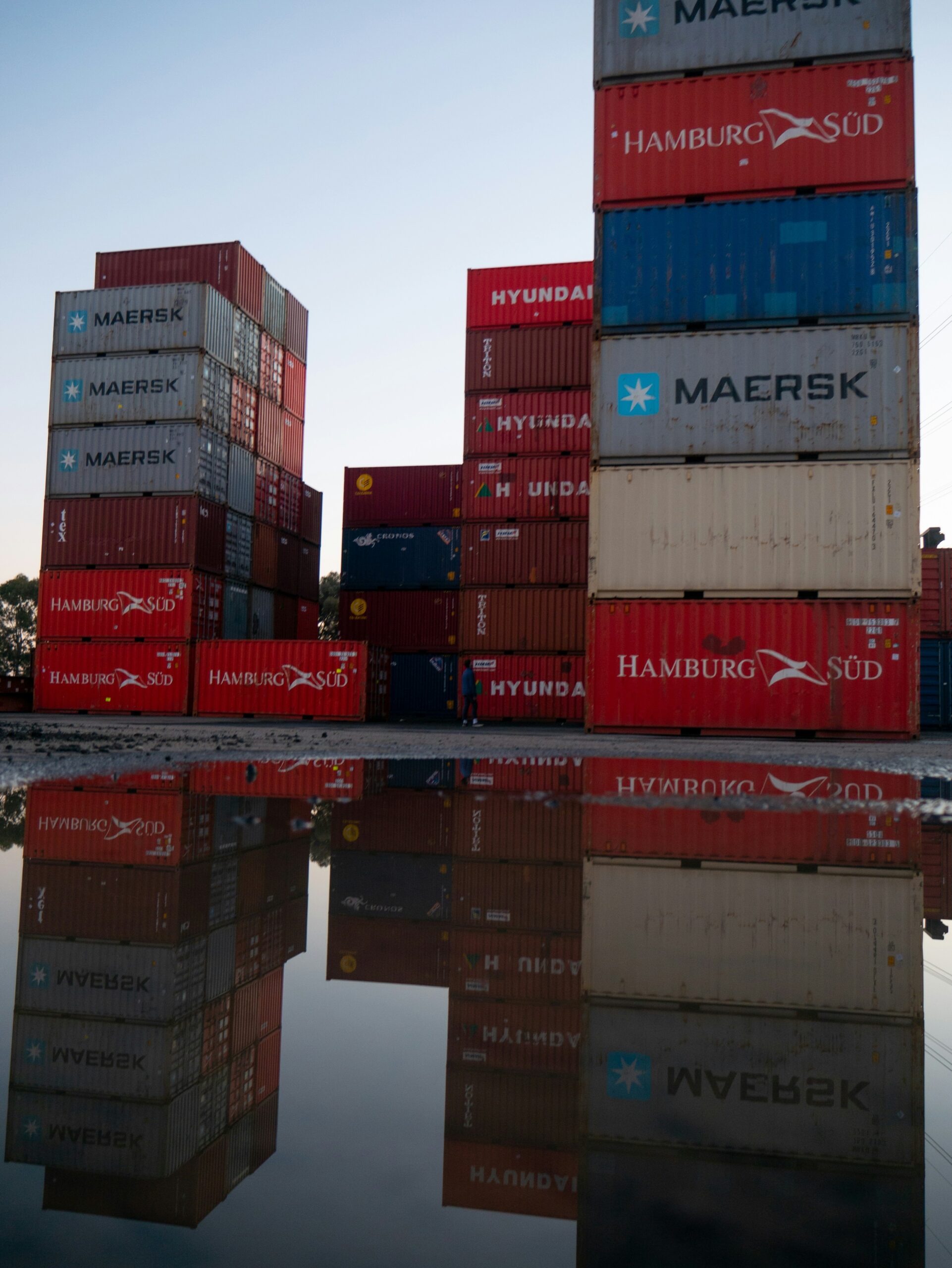An Overview of UAE-Europe Trade Relations
The trade relations between the United Arab Emirates (UAE) and Europe have evolved significantly over the decades, shaped by historical interactions, economic policies, and geopolitical factors. Historically, the UAE has positioned itself as a central trading hub in the Middle East, leveraging its strategic geographical location to facilitate trade with European countries. This has led to the establishment of robust trade networks that cater not only to UAE’s domestic markets but also to the wider Arabian Gulf region.
In recent years, the UAE’s trade with Europe has intensified, demonstrating notable growth in bilateral trade agreements. Various treaties and economic collaborations have fostered mutual benefits, enhancing connectivity and cooperation. These agreements cover a range of sectors including technology, logistics, and energy, further emphasizing the UAE’s role as a conduit for trade between Europe and emerging markets. The UAE’s free trade zones, which offer various incentives for foreign investment, have also attracted European businesses seeking to penetrate Middle Eastern markets.
Moreover, geopolitical shifts have influenced the dynamics of UAE-Europe trade relations. As Europe diversifies its sources of imports, the UAE has emerged as a critical partner for a range of goods including oil, gas, and various manufactured products. The UAE’s commitment to economic diversification, seen through initiatives like Vision 2021 and the UAE Centennial 2071, underscores its intent to strengthen these ties further. The emirates have actively changed their economic landscape to encourage innovation and collaboration with European firms, effectively ensuring that the trade relationship continues to prosper.
This burgeoning partnership showcases how collaborative frameworks and mutual interests can lead to economically advantageous outcomes, benefiting both the UAE and its European counterparts. By promoting investments and fostering trade relations, both regions stand to gain in a rapidly shifting global economic landscape.
Key Metrics: Analyzing Trade Volume and Growth
The trade relationship between the United Arab Emirates (UAE) and Europe has consistently shown significant volume and growth over the years, making it a pivotal aspect of both regions’ economic landscapes. According to recent statistical data, trade volume between the UAE and European nations reached approximately $45 billion in 2022, reflecting a robust increase compared to prior years. This growth illustrates the strengthening economic ties and the evolving nature of trade dynamics between these two regions.
To better understand these trends, it is essential to analyze historical trade figures. Over the past decade, trade volume has seen a notable increase; from approximately $30 billion in 2015 to the aforementioned figure in 2022, indicating an annual growth rate of about 6.5%. Such a consistent upward trajectory exemplifies the increasing interdependence and collaboration between the UAE and European markets. Booming sectors contributing to this growth include machinery, electronics, and petrochemicals, with each category highlighting the diverse nature of products exchanged.
Additionally, a closer look at specific product categories reveals interesting patterns regarding exports and imports. For instance, the UAE predominantly exports machinery and equipment to Europe, while importing vehicles and pharmaceuticals, reflecting the complementary nature of trade between the two regions. These commodities not only enhance economic transactions but also demonstrate shared interests and demands that propel trade forward.
Recent data comparisons between 2022 and previous years also uncover specific periods of marked growth. For instance, the year 2021 showcased a rebound after the disruptions caused by the global pandemic, with a sharp increase in exports from the UAE to Europe, contributing to overall economic recovery. Consequently, analyzing these metrics provides valuable insights into the trade dynamics, underscoring the UAE’s strategic position as a nexus between the East and West.
Major Transactions: Highlighting Key Trade Agreements and Deals
The trade relationship between the United Arab Emirates (UAE) and European nations has evolved significantly over the years, characterized by numerous influential agreements and transactions. A central component of this bilateral trade dynamic is the Comprehensive Economic Partnership Agreement (CEPA), initiated between the UAE and several European countries. These agreements aim to bolster trade flows, enhance cooperation in various sectors, and encourage investment opportunities. Such partnerships signify not just economic exchanges but also a commitment towards fostering long-term relations.
In particular, the UAE has successfully established strategic partnerships with countries like Germany and the Netherlands. For instance, the UAE-Germany Business Forum catalyzed a wave of investments and collaborations, especially in technology sectors. Notably, in 2022, the signing of a joint venture between a prominent Emirati tech firm and a German software company led to innovative solutions that are set to transform digital services in the region.
The UAE is also a key player in the oil trade, with significant agreements signed with European nations such as Italy and France. These include long-term contracts that secure the supply of crude oil from the UAE to various European refineries. Such transactions not only benefit the immediate stakeholders but also contribute to global energy security.
Moreover, the consumer goods sector has witnessed substantial transactions, with several European brands establishing manufacturing and distribution hubs in the UAE. This arrangement serves the dual purpose of tapping into the local market while allowing for broader distribution across the Middle East and North Africa regions.
Through these major transactions and trade agreements, the UAE and Europe continue to strengthen their economic ties. The ongoing collaboration in sectors like oil, technology, and consumer goods showcases the real-world impact of these agreements, highlighting the importance of international trade in fostering mutual growth and sustainability.
Future Outlook: Trends and Opportunities for Growth
The trade relationship between the United Arab Emirates (UAE) and Europe is poised for significant evolution, driven by several emerging trends and opportunities for growth. An influential factor shaping this trade dynamic is the advent of advanced technologies such as artificial intelligence, blockchain, and automation in logistics. These technologies are expected to enhance supply chain efficiency, reduce operational costs, and create a more transparent trading environment. The adoption of such innovations will facilitate faster transactions and improve the overall reliability of trade routes between the UAE and European nations.
Additionally, shifts in global supply chains, particularly in light of recent geopolitical tensions and the aftermath of the COVID-19 pandemic, are influencing trade patterns. Countries are increasingly seeking to diversify their supply sources, and the UAE stands out as a strategic partner for Europe. Its robust infrastructure and strategic geographical positioning make it an attractive hub for European businesses looking to secure alternative supply routes and markets in the Middle East, Asia, and beyond.
Moreover, changing trade policies and agreements are likely to define the future landscape of trade between the UAE and Europe. The UAE has been proactive in establishing Free Trade Agreements (FTAs) and fostering economic partnerships that can boost trade volume. Initiatives such as the Comprehensive Economic Partnership Agreements (CEPAs) further illustrate the UAE’s commitment to enhancing its global trade relations, providing new frameworks for collaboration with European nations.
In light of these factors, new sectoral frontiers are emerging where collaboration holds considerable promise. Renewable energy, technology transfer, and sustainable investment are areas ripe for growth, supporting mutual goals of economic diversification and sustainability. As both regions actively engage in these sectors, the potential for synergistic partnerships will create a conducive environment for long-term trade expansion. Overall, the future of UAE-Europe trade appears to be a landscape filled with opportunities awaiting exploration.













